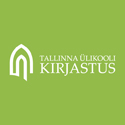Eesti sõjalaul algusest Esimese ilmasõjani [The Estonian War Song from Its Beginning to World War I]
Abstract
The paper gives an overview of Estonian war songs. Together with Keisrilaul, the Estonian translation of “Russian anthem”, they form the beginning of Estonian patriotic poetry. The tradition of Estonian war songs reaches back to the early 19th century, when Reinhold Johann Winkler published “War Songs of Estonian Land Forces” (1807), inspired by the Franco-Russian war. The tradition developed as it was infl uenced by the other wars involving Russia in the 19th century. The choices of topics and thematic structures of war songs further advanced in the period of the Russo-Turkish war, in the second half of the 1870s. At that time, the patriotic ambitions of Estonians were advanced in cooperation with the Empire of Russia; on the other hand, the humility and national sense of inferiority of Estonians were propagated by the Greater Russian ideology and ambitions. During World War I, narrative war songs, containing infl uences of Estonian trochaic tetrameter folk songs and traditional ballads, developed. In a number of verses of that time, epic, dramatic and lyric elements merged, increasing sensual intensity. Despite the parallels with Greater Russia surviving in themes, the concept of Estonia played a central role in song books, verse books and special almanacs published during World War I.
Keywords
historical context, patriotism, sacral Estonia, intertextuality
Full Text:
PDFRefbacks
- There are currently no refbacks.
Published by / Kirjastaja:

ISSN 2504-6616 (print/trükis)
ISSN 2504-6624 (online/võrguväljaanne)
